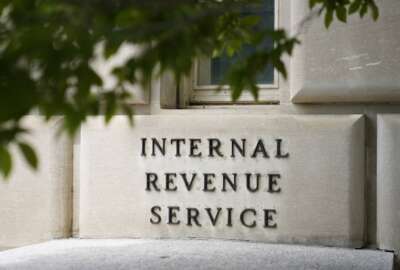
Insight by EY
Embrace business transformation to plan for workplace of the future
What does the future workspace look like? Most organizations are already talking about a hybrid working environment.
This content is provided by EY.
When COVID first shut down workplaces across the country, no one thought it would last as long as it has. Neither did anyone think things could keep running in such a heavily remote environment for this long. The Defense Department was once the poster child for insisting it couldn’t be done. And yet, last month, the Air Force announced it’s “not going back.” Six months was all it took for the impossible to become the drearily mundane.
So what comes next? What does the future workspace look like?
Most organizations are already talking about a hybrid working environment. In some cases that looks like employees only coming into the office a couple of days a week. In other cases, that looks like employees choosing whether home or the office is their preferred environment. It really comes down to each individual agency to determine its needs and how best to meet them.
“I think it’s a really interesting opportunity for organizations to really reflect on their values, the values of their mission, and what’s important in terms of their culture, and then really building around that as they reimagine their work from a future lens, figure out what their workplace and real estate footprint looks like, and what are going to be the norms and expectations for how people stay connected while working? And then how do you make the most out of time when you are together?” said Erica Ford, government and public sector people advisory services leader for EY.
The first step, Ford said, to answering these questions is to get to a baseline with the leadership team. That doesn’t mean having an answer; it means being willing to ask new questions and challenge assumptions. If leadership is on board with that, then it becomes necessary to figure out exactly what kind of work is getting done, how much of it requires a physical presence in the office, and how much of it requires collaboration to accomplish.
This also has to be both top-down and bottom-up. Leadership needs to take employee perspective into consideration, but the technical needs and input of employees can’t be ignored either. They know better than anyone what they need to get their work done.
And that leads to another question: how to be sure the work is actually getting done?
“One of the things that we’ve seen organizations do is figure out what kind of data do they have available that tells them that their people are being productive, that is not just a keystroke, and that is not big brother, because for most organizations pulling that big brother culture is going to be counter to their values, the way they work,” Ford said. “What are those things that tell you that that there’s collaboration and connectivity? How do you measure true productivity?”
Agencies have to figure out their own unique metrics for this. In some instances, it can be as easy as tracking calls in a call center, or trouble tickets for a help desk. But how do you measure a policy analyst’s productivity? Ford said that it really comes down to ensuring your leadership understands performance management.
“For a lot of organizations, performance management has been something in general that has probably needed a shakeout for years, particularly in the government space. But just because you’re going off site doesn’t necessarily mean you have to flip your performance management upside down. But I do think it requires an evaluation,” Ford said. “There’s a right and a wrong way to manage people when you don’t see them.”
She said she’s heard horror stories where bosses are remotely monitoring activity in real time and calling the second productivity shows signs of falling off, or scheduling meetings all day long because seeing an employee in the meeting is the only way to ensure they’re working.
Organizations should set productivity metrics that set very clear expectations and goals for their employees, with the right balance of flexibility and empowerment that allows for employees to figure out what is the best way to achieve these targets, all under a well-defined communication mechanism that provides follow-up and accountability.
For innovative examples of embracing remote work, Ford suggests looking to organizations that have already successfully adopted this kind of hybrid model, like the Consumer Finance Protection Bureau or the General Services Administration.
Then, from the people and processes perspective, planning for the workplace of the future spins out into more material concerns. Can you re-evaluate your real estate inventory? How do you reconfigure workspaces to balance efficiency with safety? What about IT strategies? What kinds of collaboration tools are needed to ensure the workforce can remain productive? Do the networks require an investment to be able to support those tools? Can intelligent automation be used to change processes and align to new strategies? All of these questions need to be considered within the unique context of each organization’s mission.
“At the end of the day, what we’re talking about is business transformation,” Ford said. “What ways are you going to work differently based on all of the tremendous knowledge we’ve gained, and will continue to gain?”
Copyright © 2024 Federal News Network. All rights reserved. This website is not intended for users located within the European Economic Area.




